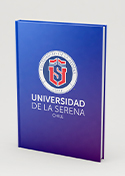Browsing by Author "Rios Rodrigo S."
Correlation of plasticities to drought and shade: implications for environmental niche overlap in drylands
(2024/03/01) Escobedo Victor M.; Rios Rodrigo S.; Salgado-Luarte Cristian; Gianoli Ernesto
Phenotypic plasticity can increase the extent of the environmental gradient occupied by a species (niche breadth) and modify the portion of niche space shared among co-occurring species (niche overlap). Thus, phenotypic plasticity may play a role in community assembly processes. Given that plants deal with a multivariate environment, and that functional traits are often correlated, plastic responses to different environmental factors are likely correlated. However, the implications of correlations of plasticities for niche overlap remain unexplored. Here, we present and evaluate a conceptual framework that links correlations of plasticities and niche overlap patterns among co-occurring plant species. We specifically tested in an arid shrubland whether positive, negative, or null correlations between plasticity to light and water availability would be associated with patterns of high, low, or random niche overlap, respectively. Field data identified light and water availability as key factors shaping herbaceous plant community structure. We estimated species' niche breadth and niche overlap using two-dimensional kernel-density estimations (NOK) and standardised effect sizes of Pianka's niche overlap index (OSES). We measured phenotypic plasticity to light and water availability in the six most abundant species in a greenhouse experiment. We used the plasticity index (PI) to test 1) the relationship between plasticity to light and water availability, and 2) the association between overall plasticity (average PI across traits) and niche breadth. We found a positive relationship between plasticity to light and water availability. Increased overall plasticity was associated with a broader niche breadth. Both NOK and OSES estimations indicated a significant niche overlap pattern. Results supported one of the predictions of our conceptual framework: that a positive correlation of plasticities would lead to increased niche overlap. The verified conceptual framework broadens our understanding of the role of phenotypic plasticity in plant community coexistence.
No home-field advantage in litter decomposition from the desert to temperate forest
(2023/05/01) van den Brink Liesbeth; Canessa Rafaella; Neidhardt Harald; Knuever Timo; Rios Rodrigo S.; Saldana Alfredo; Cavieres Lohengrin A.; Oelmann Yvonne; Bader Maaike Y.; Tielboerger Katja
1. Litter decomposition rates are determined by the interplay of climate, decomposer organisms and litter quality. It has been suggested that the decomposer community may be locally adapted to litter quality, providing a home-field advantage (HFA) resulting in accelerated decomposition of local compared to non-local litter, after accounting for decomposition differences due to litter quality and the functional capacity of microorganisms. Although widely tested in forests, this hypothesis remains controversial and lacks support of its generality across climates. 2. We therefore tested the HFA hypothesis for litter decomposition in four contrasting ecosystems along an extensive climatic gradient in Chile, using a translocation experiment involving litter from 20 species. In addition to comparing mass loss, we adopted a novel way to disentangle decomposer effects from climate effects, based on loss rates of elements that are actively released from the litter by decomposers during its breakdown versus elements that are simply leached by precipitation. We used the ratios of nitrogen and potassium losses (N/K loss) and phosphorus and potassium losses (P/K loss) to unravel the relative role of microbial breakdown (N and P loss) versus physical leaching (K loss) along the climate gradient. Thus, at each site, we tested whether litter mass loss, N/K loss and P/K loss presented an additional loss due to a HFA for local compared to non-local litter. 3. Across a wide range of environments and litter types, our findings unequivocally contradicted the HFA hypothesis. We observed no significantly positive HFA along the gradient; however, litter quality and the general ability of the decomposer community influenced litter decomposition much more strongly than origin or location of the litter. 4. Our study questions the applicability of the HFA for litter decomposition and calls for more studies that include a large range of climatic conditions to understand the context-dependency of HFA.
